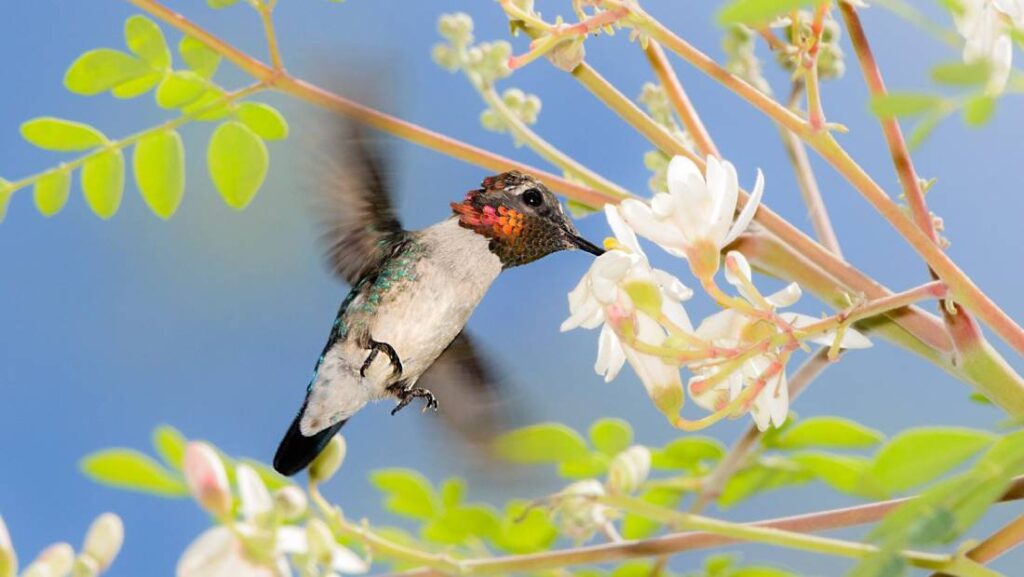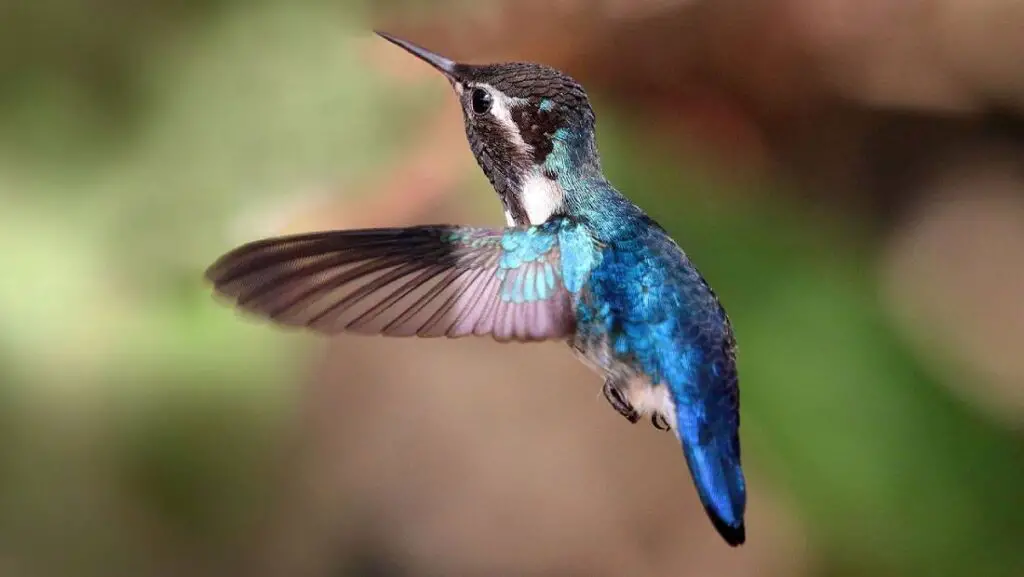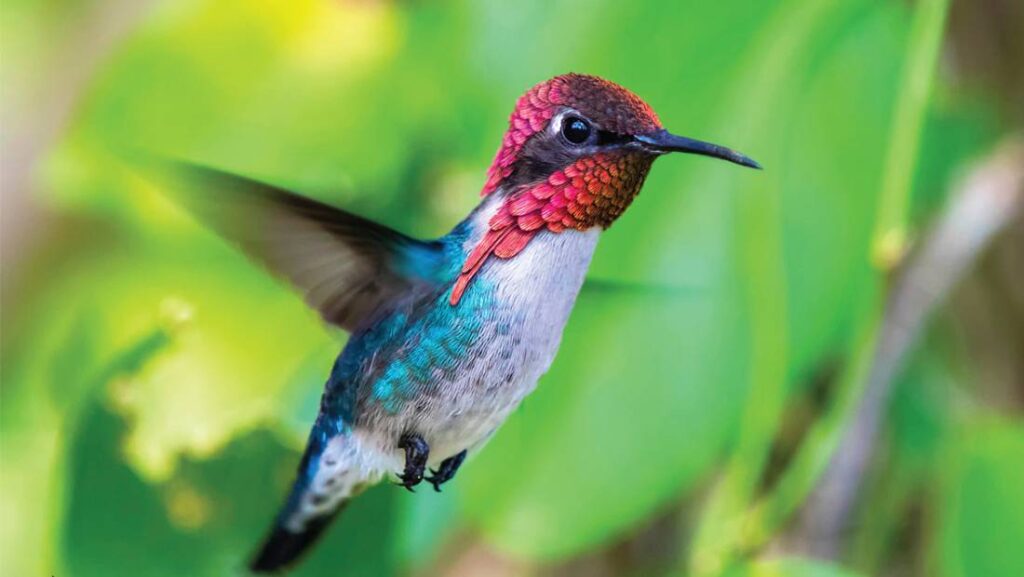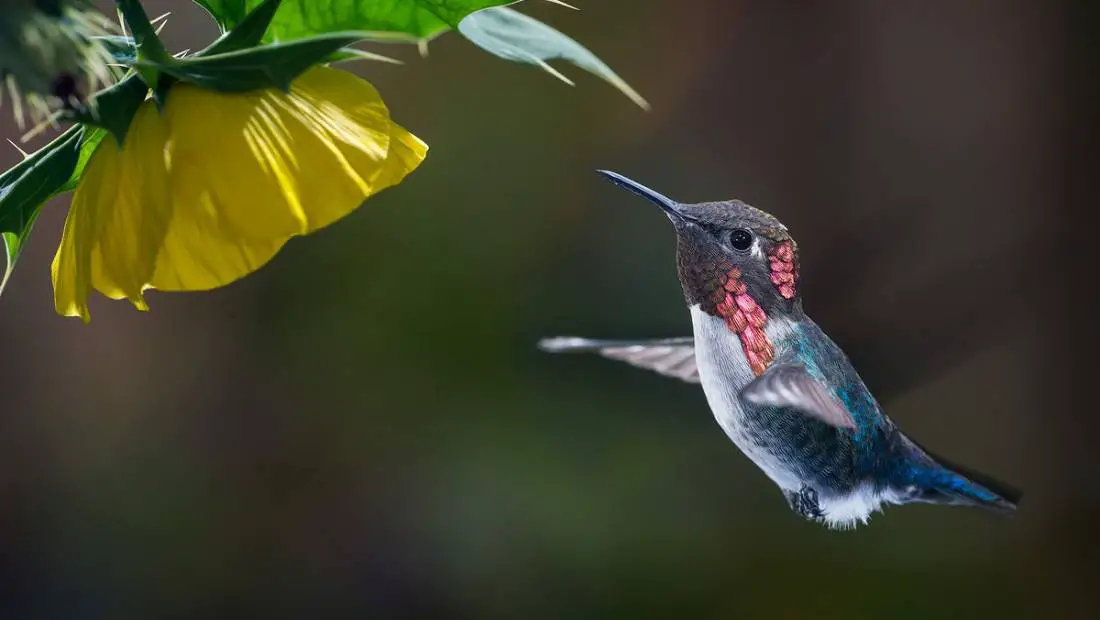The Bee sized Hummingbird, admirably known as Zunzuncito in Spanish is the smallest living bird on the planet. Native to the splendid Cuban island and a true treat to the eyes, these colourful and small birds have a big role to play in the ecosystem. Read along to find out more about these precious gems.
How small are they?
The average size of a Zunzuncito is merely about 5.6 to 6.1 cm (2.2 to 2.4 inches) in length and weight about 2 to 2.6 grams. Being entirely one-third of a teaspoon, the Zunzuncito has been titled as “The Smallest Bird in the World” for a valid reason. Their sizes vary across gender. Female birds of their species are slightly larger and weigh slightly more than males. These tiny birds can live for upto 70 years in a healthy environment.
Habitat
Cuba proudly houses these tiny jewels. Being indigenous to the island, they are rare and occasionally spotted, often mistook as bees. They make nests in both, high as well as low altitudes and are found in swampy areas, forests and gardens. They are found dotted throughout the island in Habana, Sierra de Anafe, Guanahacabibes Peninsula, Zapata Swamp, and in the Isla de la Juventud. However, due to rapid changes in the climate, and agricultural patterns of the Cuban Island, the Zunzuncitos are technically threatened towards extinction.
Zunzuncitos rarely ever migrate due to their choice of climatic conditions. They prefer to reside in tropical and subtropical regions, making Cuba a perfect abode for them. These birds usually lead a solitary life, and are very territorial, except for the breeding season. Males and females usually live separately in their own designated colonies.
Dietary Habits

Unlike most of the birds, Zunzuncitos are sweet-beaked and they enjoy feasting on nectar extracted from colourful flowers, claiming an insect-like characteristic. They surely do have a monstrous appetite for a puny body and prefer consuming nectar having a 30% sucrose concentration.
Their number one choice of dining is the Solandra Grandiflora, and others being Malvaceae, the Apocynaceae and the Chrysobalanaceae. These flowers provide them with enough sucrose to maintain constant metabolic energy They have elongated beaks to reach the base of the flower and extract the pot of nectar. They also consume minuscule insects and spiders for a variation in their diet and nutrition. Since Cuba houses other species of hummingbirds, The Zunzuncito adapted themselves to consume specific flowers and smaller insects to not be a competition to their larger counterparts.
The Hummingbirds, on average need to consume nectar and other food proportionate to half of their body weight and water proportionate to more than eight times their total body mass. They visit up to 1500 flowers each day to keep up with their calorie requirements and as a favour, assist in the pollination process for almost each of them. Hence they essentially contribute towards the reproduction of flowers in Cuban forest lands.
Difference in Dynamics
The male birds of this species have iridescent, emerald-like heads and plumage, making them appear like tiny hovering gemstones. It has a white-grey underbelly and spotted, peacock blue wings. During the mating season, the male counterparts develop pink feathers around their neck and heads, as a sign of consent. After the mating season is over, they lose their vigour and become dull in colour
The females, on the other hand, are slightly robust, have green heads and plumage and a turquoise or white underbelly. After mating with a number of partners they make soft and padded nests for their tiny babies, laying eggs similar to the size of a single green pea or a coffee bean.
Wonderous Wings

The wings of a Zunzuncito Hummingbird are their most important feature. It is fixed on a flexible joint that allows them to rotate their wings upwards, backwards, downwards and even upside down. This helps them to frantically flap their wings and stay aviated without consuming much energy while consuming nectar.
Another reason for their wings to be a genetic gift is their low aspect ratio, which means they are short and thick. It also allows them to fly at a speed of 48 to 50 kilometres per hour and swiftly change direction mid-flight, making them a difficult prey to catch. Their primary predators are hawks, frogs, falcons and various kinds of tropical spiders.
An Ode to Juliet
Male Zunzuncitos are quite the romantics. During mating season a male bird will wait for a female consort to enter his territory and will make music for his beloved by ascending 40 meters in the air and dive past her at a speed while also fanning his wings and tail, while she is gently perched on a branch, embracing each chorus. They also form groups called “Lek” and sing passionately to attract nearby females. These little hearts have set a high standard for hopeless romantics of the animal kingdom. Humans, take notes.

Amazing Facts about the Zunzuncito
- Their heart rate can go up to 1260 beats per minute, winning the title of the second fastest heart rate among all animals.
- They have the highest average body temperature among all birds, rounding up to a massive 40 degree celsius.
- They have the ability to shape their wings in a figure-of-pattern which enables them to swiftly fly over a great area with agility.
- Regardless of their size, the hummingbirds are capable of flapping their wings about 80-100 times per second.
- They have the highest metabolic rate per body mass as compared to any living being on the planet.
- They go into a state of torpor, similar to that of hibernation in bears, to consume lesser energy at night and conserve body heat.
- Their nests are usually tinier than a human thumb.
- They can fly non stop for about 20 hours.
- They are also popularly known as Helena Hummingbird.

